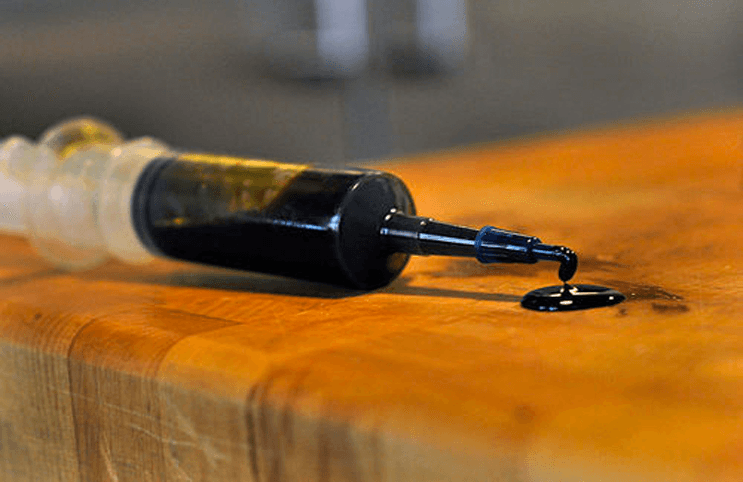AbbVie Announces ABBV-951 (Foslevodopa/Foscarbidopa) Showed Improvement in Controlling Motor Fluctuations Compared to Oral Levodopa/Carbidopa Medication in Pivotal Phase 3 Trial in Patients with Advanced Parkinson’s Disease
AbbVie (NYSE: ABBV) today announced that continuous 24 hours/day subcutaneous infusion of ABBV-951 (foslevodopa/foscarbidopa) was statistically superior to oral levodopa/carbidopa in reducing motor fluctuations in patients with advanced Parkinson’s disease (PD) in a Phase 3, randomized, double-blind, double-dummy, active-controlled study. The study met its primary endpoint of increase from baseline in “On” time (hours) without troublesome dyskinesia (involuntary movements) after 12 weeks based on the Parkinson’s Disease Diary (PD Diary).1 These results will be a key component of global regulatory submissions.
The increase in “On” time at week 12 was 2.72 hours for ABBV-951 versus 0.97 hours for oral levodopa/carbidopa (LD/CD) (p= 0.0083).1 Improvements in “On” time were observed as early as the first week and persisted throughout the 12 weeks.1 It was also observed that an improvement from baseline in hours of average daily normalized “Off” time followed a similar pattern in reductions versus oral LD/CD after the first week and persisting through week 12.1 Decreases in “Off” time after 12 weeks were 2.75 hours for ABBV-951 versus 0.96 hours for oral LD/CD (p=0.0054).1
“Parkinson’s disease is a progressive, irreversible neurological disease with debilitating symptoms that can make daily life challenging,” said Michael Severino, M.D., vice chairman and president, AbbVie. “We’re committed to addressing the continued needs of patients and are encouraged by these results that highlight a potential alternative treatment option for those affected by advanced Parkinson’s disease.”
“Patients need more therapeutic options to control their symptoms and troublesome dyskinesia for this debilitating disease,” said Jason Aldred, M.D. FAAN of Selkirk Neurology, clinical associate professor at the University of Washington, clinical assistant professor at Washington State University Elson S. Floyd College of Medicine, and a principal investigator of the study. “These data are promising and demonstrate positive results on a key endpoint used to assess efficacy of treatments for patients with advanced Parkinson’s.”
The majority of the adverse events (AEs) reported were non-serious and mild to moderate in severity in the ABBV-951 group.1 Incidence of serious AEs were 8% and 6% in the ABBV-951 group and oral LD/CD group, respectively.1 There was one patient with a treatment-emergent AE leading to death in the oral LD/CD group and none in the ABBV-951 group.1 The most common AEs reported in ≥5% in the ABBV-951 group were infusion site AEs (erythema, pain, cellulitis, edema, bruising, hemorrhage, nodule, induration, infection, and pruritus), dyskinesia, “On” and “Off” phenomenon, fall, hallucinations (including visual hallucination), balance disorder, constipation and peripheral swelling.1 The incidence of infusion site AEs was higher in the ABBV-951 group than in the oral LD/CD group and most of them were non-serious, mild to moderate in severity, resolved with or without treatment and none led to systemic complications.1 Incidence of hallucination and psychosis AEs was higher in the ABBV-951 group than in the oral LD/CD group.1 These AEs were non-serious, mild to moderate in severity. Incidence of falls and associated injuries was lower in the ABBV-951 group compared to the oral LD/CD group.1 Adverse events led to study treatment discontinuation in 21.6% of patients in the ABBV-951 group and 1.5% in the oral LD/CD group.1
Full results from the Phase 3 study will be presented at a future medical meeting or submitted for publication in a peer-reviewed journal. ABBV-951 is an investigational therapy and it is not approved for use. The safety and efficacy of ABBV-951 have not been evaluated by regulatory authorities.
About the Phase 3 M15-736 Study2
The Phase 3 randomized, double-blind, double-dummy, active-controlled study compared the efficacy, safety and tolerability of ABBV-951 (foslevodopa/foscarbidopa) to oral LD/CD in advanced PD patients. Parkinson’s disease patients were provided with a home diary (the PD Diary) to assess their motor status. The primary endpoint of “good” time (defined as “On” time without dyskinesia plus “On” time with non-troublesome dyskinesia), in contrast to “bad” time (“Off” time plus “On” time with troublesome dyskinesia) is collected and averaged over three consecutive days and normalized to a typical 16-hour waking period. Baseline values are defined as the average of normalized “good” time collected over the three PD Diary days before randomization. Approximately 130 adult participants with advanced PD were enrolled in the study across 80 sites worldwide. The study was comprised of two arms. In one arm, participants received the ABBV-951 solution as a continuous infusion under the skin plus oral placebo capsules for levodopa/carbidopa. In the second arm, participants received placebo solution for ABBV-951 as a continuous subcutaneous infusion plus oral capsules containing levodopa/carbidopa encapsulated tablets. The treatment duration was 12 weeks. More information on the study can be found on www.clinicaltrials.gov (NCT04380142).
About ABBV-951
ABBV-951 (foslevodopa/foscarbidopa) is a solution of levodopa and carbidopa prodrugs for continuous subcutaneous infusion that is being investigated for the treatment of advanced Parkinson’s disease in patients whose motor symptoms are not controlled by oral medications.
About Parkinson’s Disease
More than 10 million people worldwide are living with Parkinson’s disease,3 a progressive and chronic neurological disorder characterized by tremor, muscle rigidity, slowness of movement, and difficulty with balance.4 The motor symptoms of Parkinson’s disease result from the loss of dopamine-producing brain cells and begin when approximately 60-80 percent of these cells are lost.4 Symptoms continue to worsen slowly over the course of time.5 While there is no known cure for the disease, there are treatments available to help reduce symptoms.6
As Parkinson’s disease progresses, patients can experience fluctuations from an “On” state (when symptoms are generally well controlled) to an “Off” state, during which tremor and stiffness reappear and patients have more difficulty in moving.7 Patients can also experience dyskinesia (involuntary movements) which can significantly hinder daily activities.7 Disease progression and fluctuating levodopa levels are responsible for the onset of motor complications, including fluctuations and dyskinesia, with 50 percent of patients reporting them two to five years after initiation of treatment and approximately 80-100 percent of patients presenting with them after ten years.8
About AbbVie in Neuroscience
At AbbVie, our commitment to preserve the personhood of those living with neurological and psychiatric disorders is unwavering. Every challenge in this uncharted territory makes us more determined and drives us harder to discover and deliver solutions for patients, care partners and clinicians. AbbVie’s Neuroscience portfolio consists of approved therapies and a robust pipeline in neurological and psychiatric disorders, including Alzheimer’s disease, bipolar disorder, major depressive disorder, migraine, Parkinson’s disease, spinal cord injuries, post-stroke spasticity, schizophrenia, stroke and others.
We have a strong investment in neuroscience research, with our Neuroscience Discovery sites in Cambridge, Massachusetts and Ludwigshafen, Germany, where our research and resilience in these challenging therapeutic areas is yielding a deeper understanding of the pathophysiology of neurological and psychiatric disorders, and identifying targets for potential disease-modifying therapeutics aimed at making a difference in people’s lives.
About AbbVie
AbbVie’s mission is to discover and deliver innovative medicines that solve serious health issues today and address the medical challenges of tomorrow. We strive to have a remarkable impact on people’s lives across several key therapeutic areas: immunology, oncology, neuroscience, eye care, virology, women’s health and gastroenterology, in addition to products and services across its Allergan Aesthetics portfolio. For more information about AbbVie, please visit us at www.abbvie.com. Follow @AbbVie on Twitter, Facebook, Instagram, YouTube, and LinkedIn.
Forward-Looking Statements
Some statements in this news release are, or may be considered, forward-looking statements for purposes of the Private Securities Litigation Reform Act of 1995. The words “believe,” “expect,” “anticipate,” “project” and similar expressions, among others, generally identify forward-looking statements. AbbVie cautions that these forward-looking statements are subject to risks and uncertainties that may cause actual results to differ materially from those indicated in the forward-looking statements. Such risks and uncertainties include, but are not limited to, failure to realize the expected benefits from AbbVie’s acquisition of Allergan plc (“Allergan”), failure to promptly and effectively integrate Allergan’s businesses, competition from other products, challenges to intellectual property, difficulties inherent in the research and development process, adverse litigation or government action, changes to laws and regulations applicable to our industry and the impact of public health outbreaks, epidemics or pandemics, such as COVID-19. Additional information about the economic, competitive, governmental, technological and other factors that may affect AbbVie’s operations is set forth in Item 1A, “Risk Factors,” of AbbVie’s 2020 Annual Report on Form 10-K, which has been filed with the Securities and Exchange Commission, as updated by its subsequent Quarterly Reports on Form 10-Q. AbbVie undertakes no obligation to release publicly any revisions to forward-looking statements as a result of subsequent events or developments, except as required by law.
References
1 AbbVie. Data on file.
2 Study Comparing Continuous Subcutaneous Infusion Of ABBV-951 With Oral Carbidopa/Levodopa Tablets For Treatment Of Motor Fluctuations in Adult Participants With Advanced Parkinson’s Disease. ClinicalTrials.gov. 2021. Available at: https://www.clinicaltrials.gov/ct2/show/NCT04380142?term=NCT04380142&draw=2&rank=1. Accessed October 27, 2021.
3 Statistics. Parkinson’s Foundation. Available at: https://www.parkinson.org/Understanding-Parkinsons/Statistics#:~:text=More%20than%2010%20million%20people. Accessed October 27, 2021.
4 About Parkinson’s: Parkinson’s 101. The Michael J. Fox Foundation for Parkinson’s Research. Available at: https://www.michaeljfox.org/understanding-parkinsons/i-have-got-what.php#q2. Accessed October 27, 2021.
5 Parkinson’s Disease: Challenges, Progress, and Promise. National Institute of Neurological Disorders and Stroke. Available at: https://www.ninds.nih.gov/Disorders/All-Disorders/Parkinsons-Disease-Challenges-Progress-and-Promise. Accessed October 27, 2021.
6 Parkinson’s Disease. National Institute on Aging. Available at: https://www.nia.nih.gov/health/parkinsons-disease. Accessed October 26, 2021.
7 Wearing off and motor fluctuations. European Parkinson’s Disease Association. Available at: https://www.epda.eu.com/about-parkinsons/symptoms/motor-symptoms/wearing-off-and-motor-fluctuations/. Accessed October 27, 2021.
8 Freitas ME, Hess CW, Fox SH. Motor Complications of Dopaminergic Medications in Parkinson’s Disease. Semin Neurol. 2017;37(2):147-157. doi:10.1055/s-0037-1602423).
SOURCE AbbVie
MAPH Enterprises, LLC | (305) 414-0128 | 1501 Venera Ave, Coral Gables, FL 33146 | new@marijuanastocks.com









